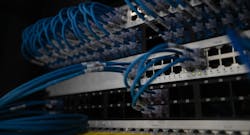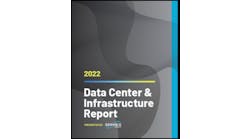Rethinking the Traditional Hardware Refresh Cycle
Jake Blough, Chief Technology Officer at Service Express, says when thinking about your next hardware refresh cycle for your data center, resist putting it on autopilot.
Jake Blough, Chief Technology Officer, Service Express
You’re working hard all year to complete vital IT projects to increase productivity and uptime. Now you’re getting ready to plan your company’s next hardware refresh and you’re counting on the advantages an upgrade will bring to your department. Before you start preparing, have you taken the time to evaluate the strategy behind traditional OEM refresh cycles? No company should spend its budget on a hardware refresh without taking a strategic look at the identified needs, desired goals and available solutions.
Challenging the Standard
It’s not unusual for companies to follow a 3-5-year hardware refresh cycle, but you can maximize your hardware investment when you follow another route. By taking a closer look at the timing and gains for your refresh project, you may be able to defer spending tens of thousands of dollars sooner than you need to.
The standard for refreshing hardware needs to be evaluated. There are opportunities to reduce the cost, risk and time associated with an upgrade. One of the best ways to cut costs in your data center while maintaining reliability is to gain control of your hardware strategy. This can be done by delaying your hardware refresh or considering purchasing the previous generation or refurbished equipment. If you’re wondering about the differences between a 3-year and 6-year refresh cycle, you will find the standard prices and features of the two options below.
The Alternative to Purchasing New
Below is the typical OEM refresh cycle that we see today. When equipment is released on the market, the cost is at its highest. Between six months to one year of the hardware being on the market, you will experience around a 25% savings. So, if you think a refresh is in your company’s best interest, consider waiting to purchase the previous generation to save on your IT budget spend.
After evaluating your options, you may conclude that pursing a refresh is the right solution. There are still considerations that can help you lower your refresh expenses. If you’re searching for new hardware to solve performance, capacity, power, or speed complications, there is a cost-friendly option for new equipment. Take a closer look at the N-1 generation (equipment that is one generation before the current generation) as a solution to secure the upgrades needed. You may be surprised at how well this alternative fits your needs with a significantly lower price point.
As new generations of gear are released, you will typically see incremental changes from the previous generation. For example, below, you will see the differences between two generations of the same OEM server. You will notice that generation 10 offers a 15% improvement overall, but on larger packets, there is only a 2-5% increase in each generation.
Hardware Reliability & Extending Your Current Equipment
You do not have to stick to a traditional 3-5-year refresh cycle routine, nor do you have to replace the hardware with only the most current version models to achieve your end goals.
An assumption in most industries is that as equipment ages, it begins to break more often, causing production loss, customer issues and downtime. This argument is sometimes mentioned when it comes to extending the life of existing hardware. This way of thinking is commonly known as the Bathtub Curve. According to this theory, when a product is new to the market, there are substantial rates of early failures followed by another set of substantial rates as the product ages.
In our previous article, The Bathtub Curve and Data Center Equipment Reliability, we shared findings from over 15 years of equipment reliability data from more than half a million devices. These ongoing findings track when equipment fails, how it fails and how often it fails to challenge this common assumption. The non-critical and critical server and storage data show that failure rates do not follow the Bathtub Curve as expected. Most sever and storage equipment is highly reliable for over 10 years, according to our data. These findings further strengthen the long-term viability and outlook for data center equipment performance – meaning you have the data to support your decision to save money by delaying a refresh.
Don’t Overlook the Impact of Firmware Updates
As new data center equipment is released, there are numerous updates and security fixes that need to be remedied. These updates are routine for the first three years while the OEM is addressing bugs.
Updating firmware can be a disruptive process, requiring downtime and staff time to complete. You may be stuck with an inconvenient shut down at 4 am on a Sunday to update appropriately. With an N-1 product, the firmware has already been remedied and you will not encounter as many updates as you would with the newest generation of equipment.
Evaluating Your Options
Now you’re ready for better decision-making as you determine your refresh strategy, your options and your investment. You do not have to stick to a traditional 3-5-year refresh cycle routine, nor do you have to replace the hardware with only the most current version models to achieve your end goals. To recap, the options below include the scenarios, pros and cons for your next refresh project.
Resist putting your next hardware refresh on autopilot. When you plan and organizes your refresh priorities according to the corresponding level of immediacy and importance, you create more value and control within your department and data center. By evaluating your needs and finding the solutions that align the most with your overall demands, you will create a refresh strategy that ensures performance, reliability and cost optimization for your company.
Jake Blough is Chief Technology Officer at Service Express.





